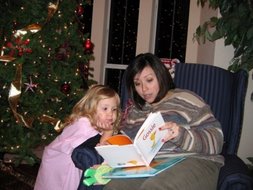Introduction: This amusing poem from a dog's point of view repeats the refrain "Feed me, feed me,/I'm a chowhound!" Perfect for pairing with a discussion on pets, food or just for fun.
Chowhound
by Daniel Kirk
I know what kind
of dog I am:
the kind that lives
for steak and ham!
My tummy makes
a grumbling sound.
Feed me, feed me,
I'm a chowhound!
I like chicken
topped with cheese.
Serve me one more
portion, please!
Give me burgers,
gently browned.
Feed me, feed me,
I'm a cowhound!
Give me prime beef,
lamb, and rice.
A T-bone steak
would be so nice!
I like sausage,
fat and round.
Feed me, feed me,
I'm a chowhound!
Jerky, rawhide,
leather chews--
those are treats
that I can use!
In my bowl or
on the ground,
feed me, feed me,
I'm a chowhound!
Moist and meaty,
soft and chewy…
I'll eat it if it's
nice and gooey!
Slop that stew
in one big mound
Feed me, feed me,
I'm a chowhound!
Below the table
by the sink,
I've looked
everywhere, I think,
but crumbs and scraps
are all I've found.
Feed me, feed me,
I'm a chowhound!
I'm starving, Master,
look at me!
Don't make me
wait in misery.
Before I lose
a single pound,
feed me, feed me,
I'm a chowhound!
Kirk, Daniel. 2003. Dogs rule!. New York: Hyperion Books for Children.
